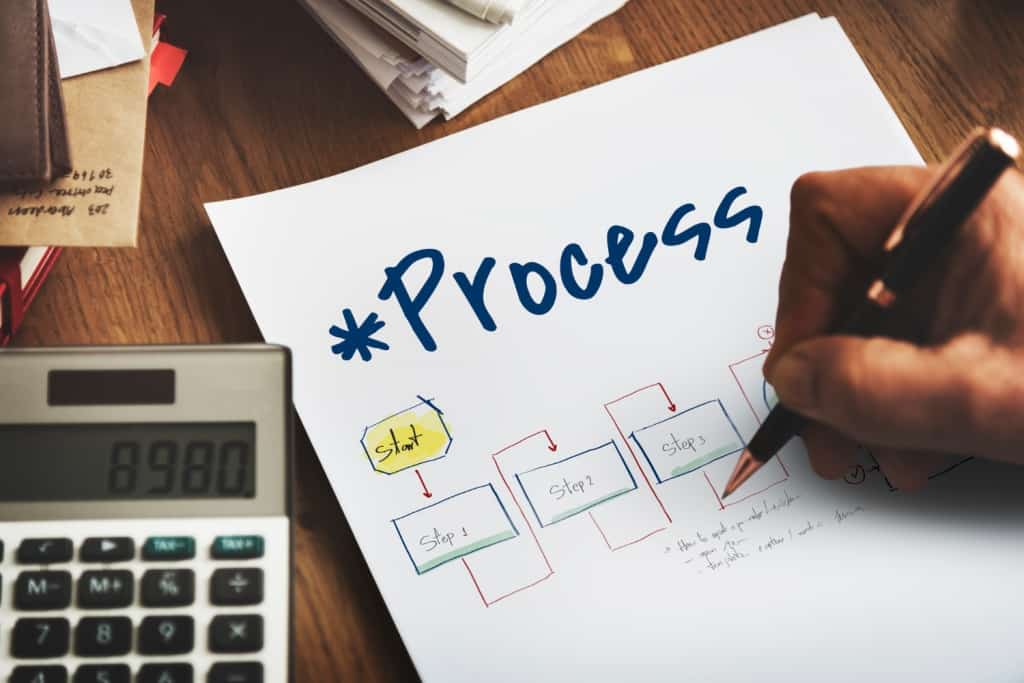項目實施 是將計劃轉化為現實的關鍵階段。願景與行動的結合是成敗的關鍵,而成功的成功取決於有效的策略。
在這篇文章中,我們將探討計畫實施計畫的意義,揭示其在實現組織目標中的關鍵作用,並就以下方面提供寶貴的指導: 如何 實施一個項目 以及實施時應避免的事項。
開始吧!
目錄
到底什麼是項目實施?
項目實施是將計劃好的項目付諸行動並執行的階段。 它涉及將計劃的活動、任務和策略轉化為可衡量的結果。
在此階段,項目經理和團隊共同努力協調活動、有效分配資源、管理時間表、分配職責、監控進度並適應變化或不可預見的情況。
項目實施通常需要各個部門或利益相關者之間的協作,確保順暢的溝通和協調,以實現預期的結果。

提高參與度的技巧
項目實施的重要性是什麼?
項目實施是規劃與成功之間的橋樑,沒有正確的實施,再好的計劃也只能是想法。
- 它將計劃變為現實。
- 它確保項目符合組織的整體願景和使命,並為其成長和成功做出貢獻。
- 它確保部署正確的資源,包括財力、人力和物力來開展項目活動。
實施計劃的主要組成部分是什麼?
實施計劃通常由指導項目執行的多個組件組成。 具體要素可能會根據項目的性質而有所不同,但以下是 4 個共同點:
- 項目目標和範圍: 明確定義專案目標,概述專案的目標。確定工作範圍,明確專案的邊界和可交付成果。
- 時間表和里程碑: 制定詳細的時間表,概述專案的關鍵活動、任務和里程碑。設定完成每項任務和實現重要專案里程碑的具體日期或時間範圍。
- 資源分配: 確定專案所需的資源,例如人力資源、設備、材料和資金。有效分配資源,確保在需要時可用,並符合專案要求。
- 角色和責任: 明確定義參與項目的團隊成員的角色和職責。 向個人或團隊分配具體的任務和職責,確保每個人都了解自己在實施過程中的角色。

成功實施項目的步驟
通過執行以下步驟,您可以提高成功實施項目的機會:
步驟 1 – 讓每個人都達成共識:
作為項目經理,您需要確保所有利益相關者都清楚地了解項目計劃、其目標和預期結果。 向團隊傳達項目計劃,澄清任何疑問,並解決問題或疑慮,以建立共識。
步驟 2 - 制定詳細的專案計劃:
創建一個全面的項目計劃,概述所涉及的任務、時間表、資源和依賴關係。
- 例如,如果該項目要發起營銷活動,該計劃將包括市場研究、設計營銷材料、安排廣告投放和執行社交媒體活動等任務,並為每項任務指定具體的時間表。
步驟 3 — 參與並協調團隊:
讓項目團隊參與進來,並協調他們的努力以實現項目目標。
- 明確定義角色和職責,確保每個團隊成員了解他們的任務以及他們如何為專案的成功做出貢獻。
- 營造鼓勵開放溝通和團隊合作的協作環境。
步驟 4 — 分解任務並設定優先順序:
將項目計劃分解為更小的、可管理的任務。 確定任務依賴性並識別關鍵活動。 設置優先級並建立任務執行的邏輯順序。
這樣,您可以組織團隊的工作並確保從一項任務到下一項任務的順利進行。

步驟 5 — 時間至關重要:
您需要為每項任務創建一個包含開始日期和結束日期的現實時間表,並設置里程碑來標記關鍵成就或項目階段。 確保時間表考慮到任務依賴性和資源可用性。 定期監控時間表的進度並根據需要進行調整。
第六步-有效分配資源:
根據任務需求分配資源,包括人力資源、材料和設備。確保資源在需要時可用,且與專案預算相符。優化資源利用率,以提高效率並最大限度地減少瓶頸。
第 7 步 — — 監控進度並管理風險:
跟踪任務完成情況,識別瓶頸,並及時解決任何偏差。 通過識別潛在風險、評估其影響並製定緩解計劃來實施風險管理策略。 隨著項目的進展定期審查和更新風險管理方法。
步驟 8 — 溝通與協作:
有效的溝通和協作是成功的關鍵。 您可以讓每個人定期了解最新情況,召開會議討論我們的進展,並提供反饋以保持勢頭。
別忘了,透明度和主動解決問題才是你的秘密武器。讓我們利用協作工具和平台,讓資訊共享變得輕而易舉。
步驟 9 — 適應與調整:
在整個項目中保持靈活性並響應變化。 預測潛在的挑戰並相應地調整計劃。
透過定期評估我們的表現並吸收經驗,您可以做出必要的調整,以確保專案走在正確的軌道上。
步驟 10 — 記錄並學習:
妥善記錄您和您的團隊的工作、所做的決策以及所取得的成果至關重要。總結實施過程中的經驗教訓,以改善未來的專案。進行專案後回顧,評估專案成功程度並找出需要改進的領域。
項目實施中應避免的 5 個關鍵事項

重要的是要了解可能阻礙成功的常見陷阱和挑戰。 以下是項目實施中應避免的一些關鍵事項:
- 規劃不善: 定義明確的目標、概述範圍、制定詳細的項目計劃並識別潛在風險。 例如,在沒有適當規劃的情況下倉促實施可能會導致延誤和預算超支。
- 缺乏溝通: 想像一下一個團隊正在做一個項目,但沒有人知道其他人在做什麼。 建立有效的溝通渠道,讓每個人都了解情況並保持一致。 定期向利益相關者通報最新情況,鼓勵公開對話,並解決出現的任何問題。
- 資源配置不足:您需要設想人力或材料不足的情況,才能完成工作。確保資金、人員和設備配置充足。監控資源利用率並進行調整,以避免瓶頸,確保工作順利進行。
- 範圍蔓延: 想像一個項目不斷成長和發展,超出了最初的計劃。 仔細管理變更請求,在接受變更請求之前評估其影響。 保持專注,防止延誤和成本增加。
- 缺乏風險管理: 主動識別和評估風險,制定緩解策略並監控新出現的風險。 忽視風險管理可能會導致不可預見的障礙。
創建項目實施計劃的工具
啊哈幻燈片 可以提供有價值的工具來幫助您實施項目:
關鍵要點
執行良好的項目實施計劃對於將想法變為現實至關重要。 通過遵循全面的計劃、避免常見的陷阱並利用有效的工具和策略,項目經理可以在應對複雜的實施過程中取得更大的成功。
常見問題
項目實施的七個階段是什麼?
制定詳細的項目計劃: 創建一個包含任務、時間表、資源和依賴關係的全面計劃。
吸引並協調團隊: 定義角色、鼓勵開放式溝通並培養團隊合作。
分解任務並設定優先級: 通過將計劃分解為具有明確優先級的可管理任務來組織工作。
時間就是生命: 考慮依賴性和資源可用性,建立具有里程碑的現實時間表。
有效配置資源: 優化資源利用率以確保可用性並符合預算。
監控進展並管理風險: 跟踪任務完成情況、解決偏差並實施風險管理策略。
溝通與協作: 分享最新動態、召開會議並提高透明度和主動解決問題。
適應和調整: 保持靈活性,預測挑戰並做出必要的調整。
記錄並學習: 保留適當的文檔、吸取經驗教訓並進行項目後審查以持續改進。
項目實施的重要性是什麼?
項目實施將計劃變為現實,沒有正確的實施,再好的計劃也只能是想法。
實施計劃的 4 個主要組成部分是什麼?
項目目標和範圍
時間表和里程碑
資源分配
角色和責任









